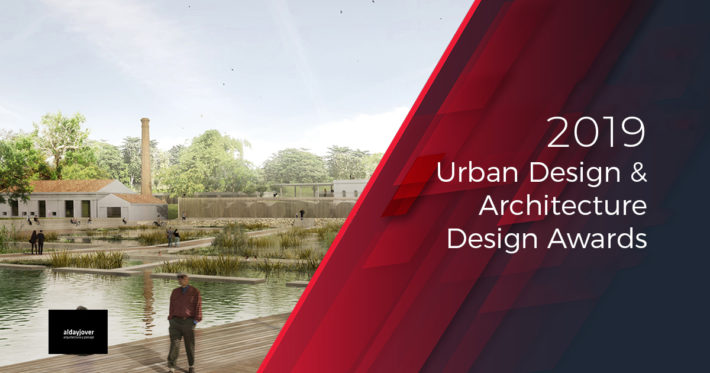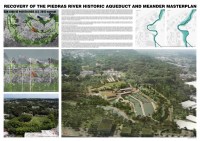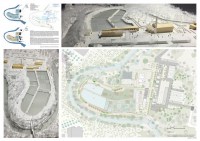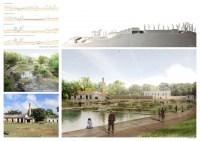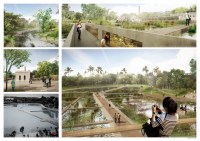The Master Plan’s proposal for the recovery of the aqueduct and its surroundings is organized through an approach on three scales, along with the definition of strategies that will drive the transformation of the systems linked to the meander. Among those transformations, the plan proposes restoring the hydraulic infrastructure; reinforcing the flood protection mound; enhancing the river’s flood dynamics with a series of beaches; and introducing uses associated with the residential sphere, education and research.
Winner- Urban Design & Architecture Design Awards 2019
Firm | Aldayjover Architecture And Landscape
Category | Landscape Design (Concept)
Team | Iñaki Alday, Margarita Jover, Jesús Arcos, Francisco Mesonero, Jorge Rigau FAIA Arquitectos PSC
Country | Puerto Rico
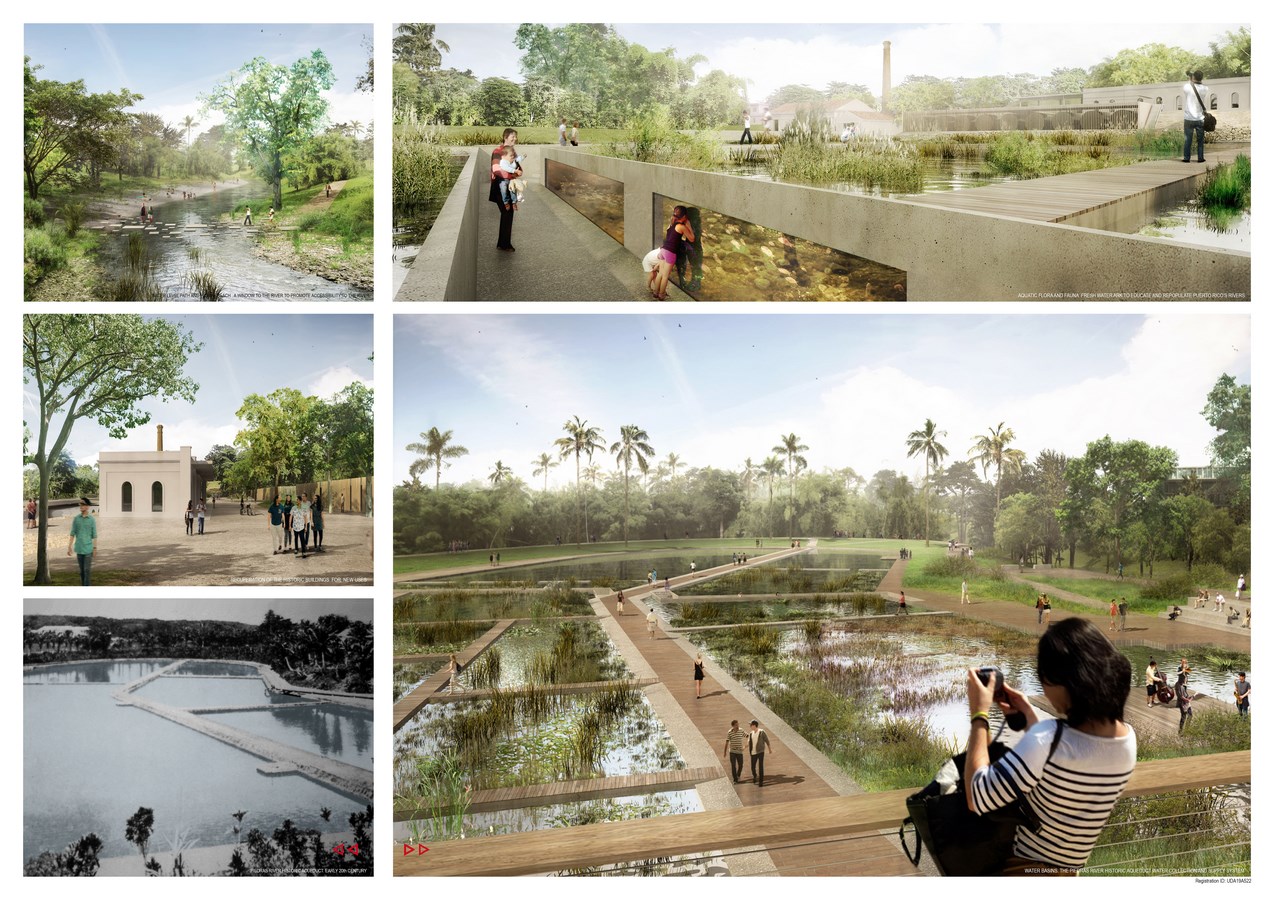
REFLECTIONS ON THE TERRITORIAL SCALE
In addition to the aqueduct’s considerable size, it is also part of a larger-scale system of green spaces. The project proposes generating a green corridor by showcasing the value of the aqueduct and its associated natural systems, in a combination of nature reserves and river preserves in a physical continuum, safeguarding the diversity of the island’s fauna and flora: an arching green belt connecting the Piedras River with the canal in Puerto Nuevo and the Río Grande de Loíza.
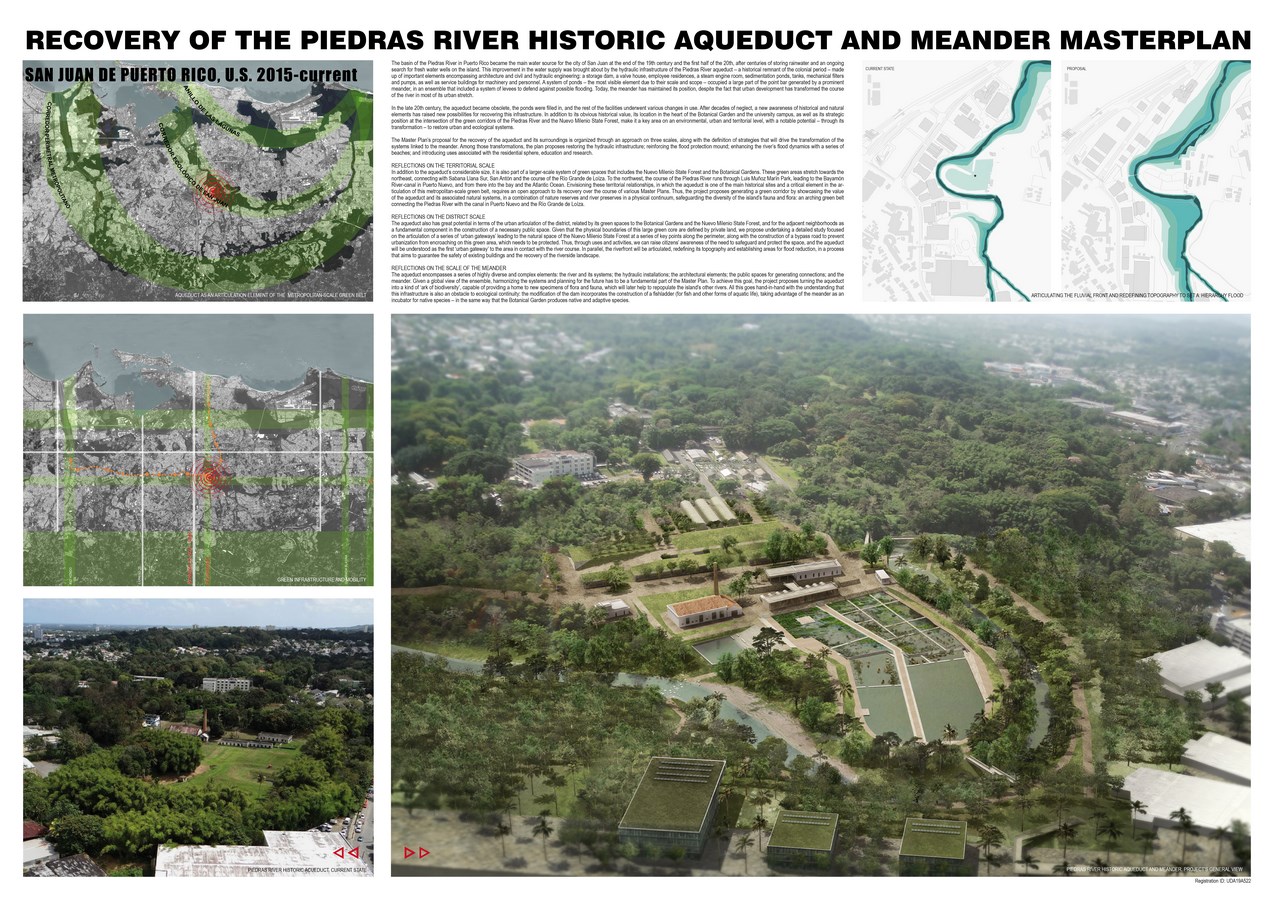
REFLECTIONS ON THE DISTRICT SCALE
Given that the physical boundaries of this large green core are defined by private land, we propose undertaking a detailed study focused on the articulation of a series of ‘urban gateways’ leading to the natural space of the Nuevo Milenio State Forest at a series of key points along the perimeter, along with the construction of a bypass road to prevent urbanization from encroaching on this green area, which needs to be protected. Thus, through uses and activities, we can raise citizens’ awareness of the need to safeguard and protect the space, and the aqueduct will be understood as the first ‘urban gateway’ to the area in contact with the river course. In parallel, the riverfront will be articulated, redefining its topography and establishing areas for flood reduction, in a process that aims to guarantee the safety of existing buildings and the recovery of the riverside landscape.
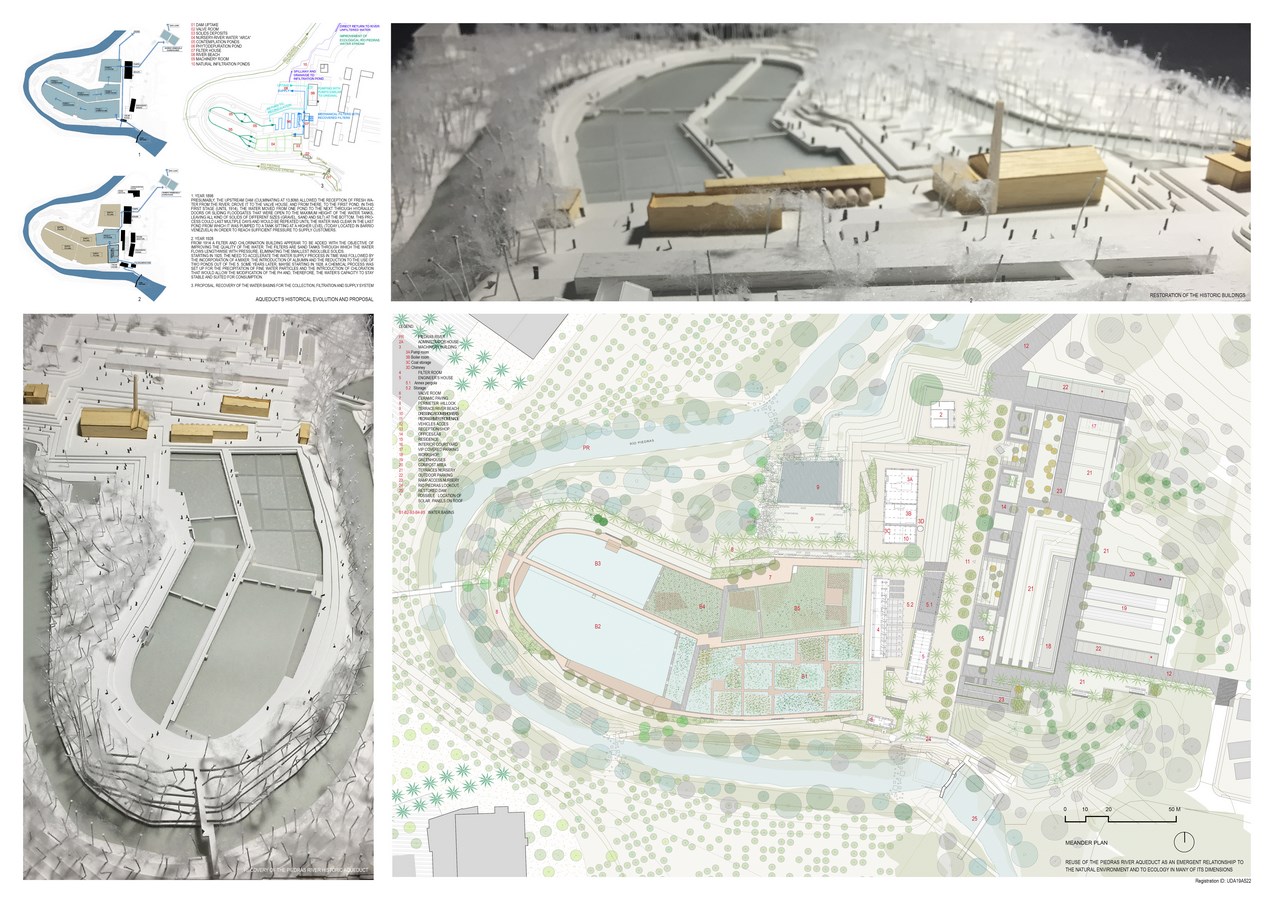
REFLECTIONS ON THE SCALE OF THE MEANDER
The aqueduct encompasses a series of highly diverse and complex elements: the river and its systems; the hydraulic installations; the architectural elements; the public spaces for generating connections; and the meander. Given a global view of the ensemble, harmonizing the systems and planning for the future has to be a fundamental part of the Master Plan. To achieve this goal, the project proposes turning the aqueduct into a kind of ‘ark of biodiversity’, capable of providing a home to new specimens of flora and fauna, which will later help to repopulate the island’s other rivers. All this goes hand-in-hand with the understanding that this infrastructure is also an obstacle to ecological continuity: the modification of the dam incorporates the construction of a fishladder (for fish and other forms of aquatic life), taking advantage of the meander as an incubator for native species – in the same way that the Botanical Garden produces native and adaptive species.


